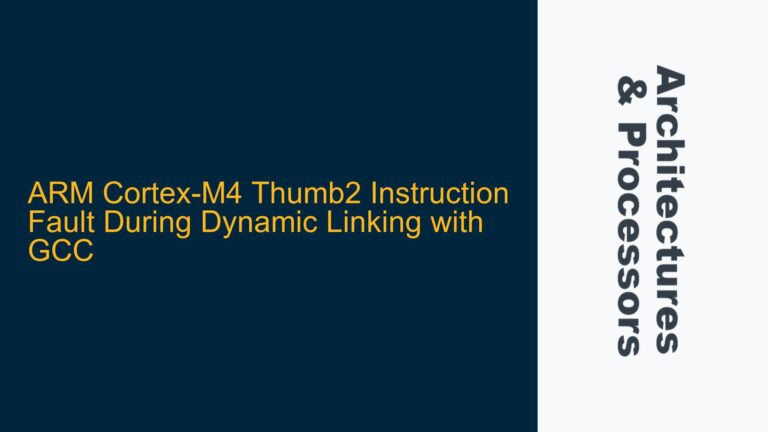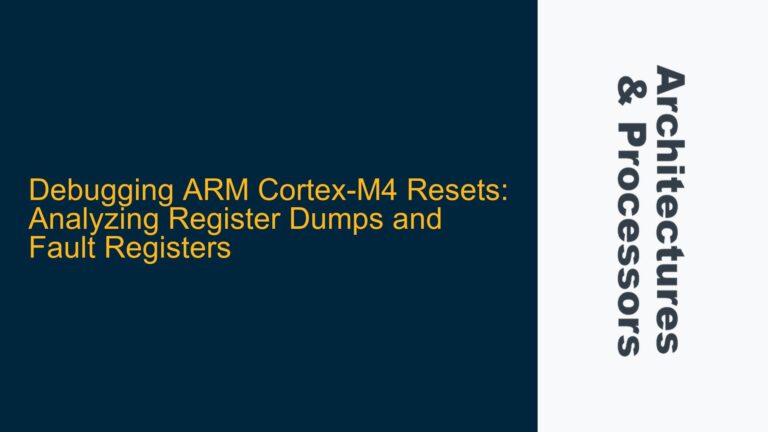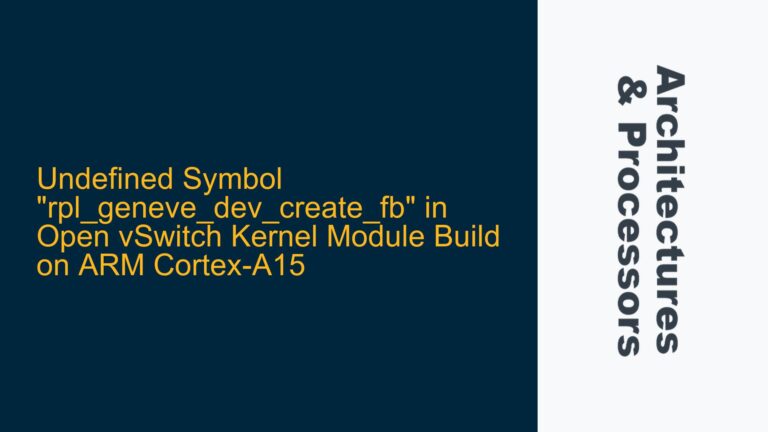AHB Slave ERROR Response Timing and Protocol Compliance
The Advanced High-performance Bus (AHB) protocol, part of the ARM AMBA specification, defines a robust and efficient communication mechanism between masters and slaves in an SoC. One of the critical aspects of the AHB protocol is the handling of error responses, particularly the requirement for a two-cycle ERROR response. This requirement ensures that the system can gracefully handle errors while maintaining data integrity and protocol compliance.
In the AHB protocol, when a slave detects an error condition, it must assert the ERROR response over two clock cycles. This two-cycle response is mandatory, regardless of whether the master intends to continue with subsequent transfers. The protocol does not provide an option for a single-cycle ERROR response, even if the master is known to continue with the next transfer. This design choice is rooted in the need for consistent behavior across all possible master-slave interactions, ensuring that the system can handle errors predictably and reliably.
The two-cycle ERROR response serves several purposes. First, it provides the master with sufficient time to recognize the error and take appropriate action, such as canceling the next transfer or initiating an error recovery routine. Second, it ensures that the error condition is clearly communicated to the master, preventing any ambiguity in the system’s response to the error. Finally, it maintains compatibility with the AHB protocol’s timing requirements, which are designed to support a wide range of system configurations and performance characteristics.
Master-Slave Interaction and Protocol Constraints
The necessity of the two-cycle ERROR response arises from the inherent uncertainty in the master-slave interaction. The slave does not have prior knowledge of the master’s intentions regarding subsequent transfers. Even if the master is known to continue with the next transfer, the slave must adhere to the protocol’s requirements to ensure consistent and predictable behavior across all possible scenarios.
The AHB protocol defines specific timing requirements for the ERROR response to ensure that the master can reliably detect and respond to error conditions. These requirements are based on the assumption that the master may choose to cancel the next transfer upon detecting an error. The two-cycle ERROR response provides the master with the necessary time to make this decision, ensuring that the system can handle errors gracefully without violating the protocol’s timing constraints.
In addition to the timing requirements, the AHB protocol also specifies the behavior of the master and slave during an ERROR response. The master must be able to recognize the ERROR response and take appropriate action, such as canceling the next transfer or initiating an error recovery routine. The slave, on the other hand, must ensure that the ERROR response is asserted for the required two cycles, regardless of the master’s intentions. This behavior is critical to maintaining the integrity of the system and ensuring that errors are handled consistently across all possible scenarios.
The protocol’s design also takes into account the potential for timing variations and uncertainties in the system. By requiring a two-cycle ERROR response, the protocol ensures that the master has sufficient time to detect and respond to the error, even in the presence of timing variations or uncertainties. This design choice is particularly important in high-performance systems, where timing variations can have a significant impact on the system’s behavior and performance.
Implementing Two-Cycle ERROR Response in AHB Slaves
Implementing the two-cycle ERROR response in an AHB slave requires careful consideration of the protocol’s timing requirements and the system’s overall design. The slave must be designed to detect error conditions and assert the ERROR response for the required two cycles, regardless of the master’s intentions. This implementation must be consistent with the protocol’s requirements and must ensure that the system can handle errors predictably and reliably.
The first step in implementing the two-cycle ERROR response is to design the slave’s error detection logic. This logic must be capable of detecting error conditions and asserting the ERROR response in accordance with the protocol’s timing requirements. The error detection logic must be designed to handle a wide range of error conditions, including address decoding errors, data corruption, and protocol violations. The logic must also be designed to ensure that the ERROR response is asserted for the required two cycles, regardless of the master’s intentions.
Once the error detection logic is in place, the next step is to design the slave’s response logic. This logic must be capable of asserting the ERROR response for the required two cycles and must ensure that the response is consistent with the protocol’s timing requirements. The response logic must also be designed to handle the case where the master continues with the next transfer, ensuring that the ERROR response is still asserted for the required two cycles.
In addition to the error detection and response logic, the slave must also be designed to handle the case where the master cancels the next transfer upon detecting an ERROR response. This requires the slave to be able to recognize the master’s decision and adjust its behavior accordingly. The slave must be designed to ensure that the ERROR response is still asserted for the required two cycles, even if the master cancels the next transfer.
Finally, the slave’s implementation must be verified to ensure that it complies with the AHB protocol’s requirements. This verification process must include both functional and timing verification, ensuring that the slave’s behavior is consistent with the protocol’s requirements and that the system can handle errors predictably and reliably. The verification process must also include corner case testing, ensuring that the slave’s behavior is consistent across all possible scenarios.
In conclusion, the two-cycle ERROR response is a critical aspect of the AHB protocol, ensuring that the system can handle errors predictably and reliably. Implementing this response in an AHB slave requires careful consideration of the protocol’s timing requirements and the system’s overall design. By following the steps outlined above, designers can ensure that their AHB slaves comply with the protocol’s requirements and that the system can handle errors gracefully and consistently.






